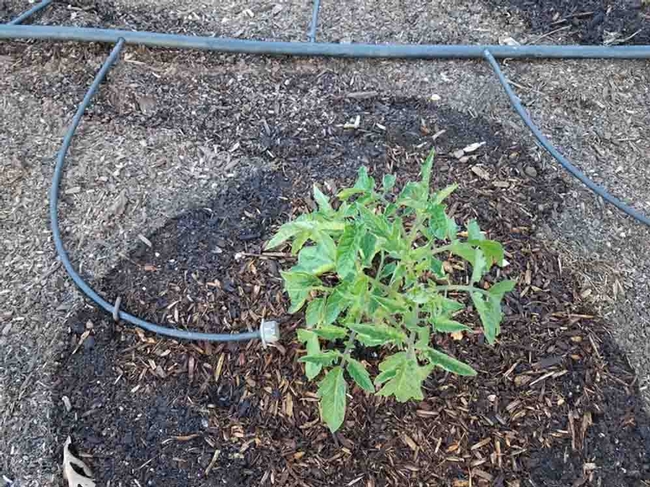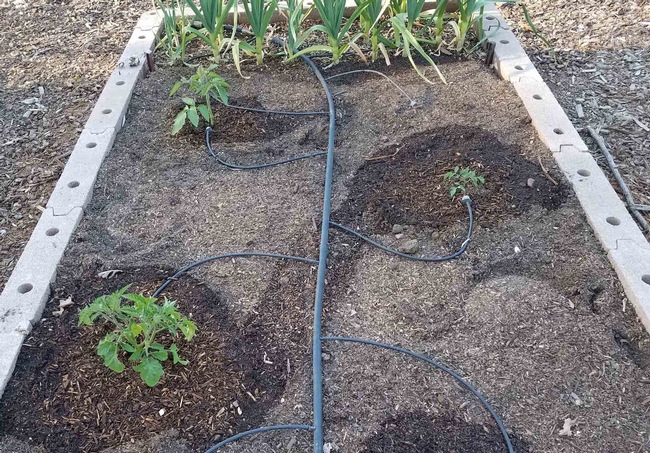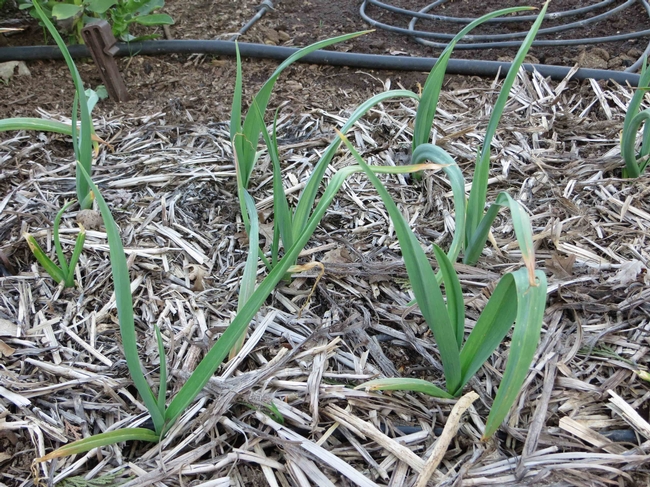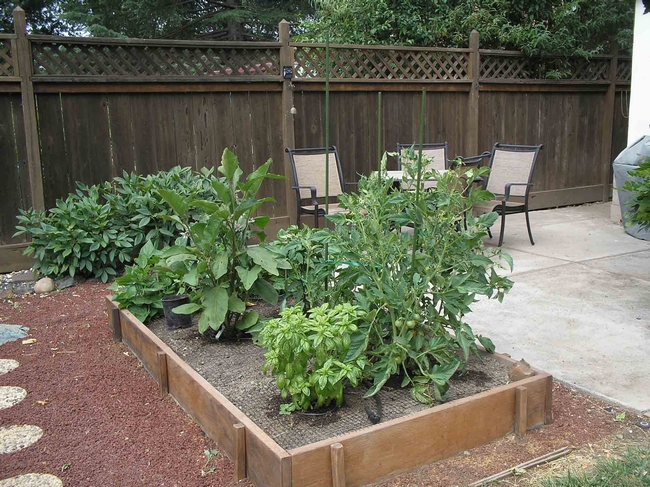As we enter another summer of drought, conserving water is essential. Luckily, there are a number of ways you can significantly reduce water use in your vegetable garden.

Mulch, mulch, mulch! Mulching is probably the single most important thing a gardener can do to reduce water consumption in a vegetable garden, or the home landscape in general. Mulching reduces evaporation from the soil by up to 35% and can significantly cut irrigation needs. Mulches also smother weeds, which compete with vegetables for water.
Mulching with black plastic sheeting is the most effective way to conserve soil moisture, but it also raises soil temperatures, so its use should be limited to heat-loving vegetables such as tomatoes, peppers, eggplants, cucumbers, squash and melons. Plan to lay down black plastic early in the season, so that by the time extreme summer temperatures arrive, plants will have matured and their leaves will shade the plastic.

Grass clippings make excellent mulch because they release nitrogen into the soil as they break down. To avoid matting, clippings should applied in thin layers between one-quarter and one-half an inch deep and be allowed to dry out between layers. Do not use grass clippings from lawns that have been treated with herbicides. Other organic mulches include wood shavings, compost, bark, straw, or alfalfa. Organic mulches should be one to three inches thick in vegetable gardens; the larger the mulch particles, the thicker the mulch needs to be. Also, thicker layers of shavings, straw, or bark may lead to a carbon-nitrogen imbalance in the soil. A layer of newspaper two sheets thick can be placed under organic mulches to enhance their effectiveness. (Do not use glossy printed material for this purpose, as the ink may be toxic to plants.)
When deciding which vegetables to plant, be aware that the amount of water needed by different crops varies. Corn and most beans require the greatest water use of commonly-planted garden vegetables. Vegetables that are more drought tolerant include chard, black-eyed peas (cowpeas), heat-tolerant tomatoes (including many cherry varieties), some varieties of okra, mustard greens, eggplant, jalapeno and poblano peppers, Black Knight zucchini, and New Zealand and Malabar spinach. Shallow-rooted crops, including potatoes, onions (and most other bulb, root or tuber crops), celery, and plants in the cabbage family, require more frequent irrigation. For this reason, mulch is especially beneficial for shallow-rooted crops. Tomatoes, sweet potatoes, melons and asparagus are more deep-rooted and can tolerate longer periods without irrigation. Beans, carrots, peppers, summer squash and cucumbers are intermediate in root depth. Additionally, low-growing plants and plants with smaller leaves tend to lose less water through their leaves than taller, leafier varieties. Bush beans, for example, use less water than pole beans. Also, miniature varieties of vegetables, such as mini bell peppers and eggplants, need less water for fruit development than standard varieties.

How a garden is irrigated can affect how much water it uses. Water early in the morning, so that water has a better chance to soak into the soil before it evaporates. A drip system (under mulch) is an efficient way to deliver water to crops with minimal evaporation loss. To avoid overwatering, monitor soil moisture. Generally, if garden soil has dried out to a depth of two to four inches, it's time to water. Including a timer as part of an irrigation system will reduce waste due to human error. Overhead sprinklers and hose-end sprayers are inefficient, result in high evaporation losses and are more likely to trigger diseases such as mildew. Also, the amount of water needed by plants varies over their life cycle. As a rule of thumb, water is most critical for plants during the first few weeks of development, immediately following transplanting, and during flowering and fruit production. Target the timing and amount of water with these plant needs in mind. It is also important to check and maintain your irrigation system frequently to keep it performing at top efficiency.

For more information, see “Water Conservation Suggestions for Your Home Vegetable Garden." UCCE Master Gardeners of Trinity County.
The Master Gardeners Spring 2021 Workshop Series is underway. It is not too late to sign up for our workshop on Honeybees, and an upcoming 4-part series on Firewise Landscaping. Check our website to read about these free workshops and register for them.
UC Master Gardeners of Butte County are part of the University of California Cooperative Extension (UCCE) system. To learn more about us and our upcoming events, and for help with gardening in our area, visit our website. If you have a gardening question or problem, email the Hotline at mgbutte@ucanr.edu (preferred) or call (530) 538-7201.